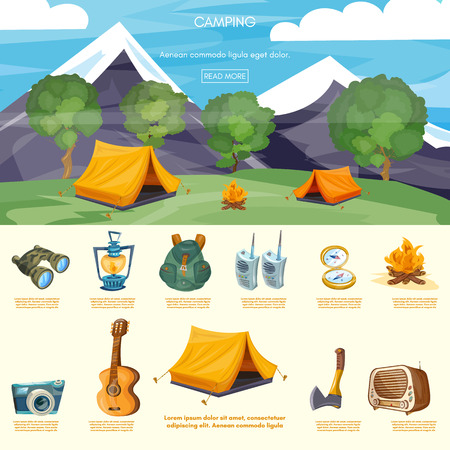Establishing your camping tent can be an overwhelming task for also seasoned campers. This guide will cover the fundamentals of pitching a camping tent correctly and safely so you can enjoy your camping trip without tension or concern.
What is the difference between canvas and nylon?
Begin by laying out your tent's footprint and ground sheet to protect your tent flooring from rocks, sticks, dust, and various other particles. Next, set up the camping tent poles and secure them to the corners of the tent body using the suitable sleeve or hook.
Choosing the Right Site
When you are exhausted after a long day hiking, you intend to pitch your outdoor tents and prepare yourself to rest. However you must initially walk around the site to see to it it is secure for outdoor camping. Look down and up to find out whether any trees have large dead branches that can fall on your outdoor tents. These are often called widowmakers and you don't want them to drop on you while you're resting.
Additionally make certain to stay clear of low spots that could flooding throughout a tornado and to camp away from animal routes, nests and environments where ticks and chiggers are probably to flourish. Try to find a level, rock-free place that is big enough for your outdoor tents and any other equipment you'll be bringing.
Some people like to establish their camping tents up so the head end is pointed toward the eastern to capture the sun's warming rays first thing in the early morning. This isn't always necessary, yet it is a good touch that can aid wake you up.
Pitching Tips
It might appear obvious, yet correct camping tent pitching is just one of one of the most essential factors in a good night's rest. Having a practice run in your home will aid you familiarize yourself with your outdoor tents, discover all the pole sleeves and bolts, and make certain everything remains in place. It's also a fun time to exercise using guylines for security and to uncover any type of broken items.
When you reach your camping website, analyze the terrain to see if it appropriates for your tent. A great rule of thumb is to pitch the outdoor tents on a level, level spot with a mild downhill angle. This will certainly enable rainfall to drain away from the tent as opposed to pooling before it.
If you can't find a degree area, take into consideration putting a tarp or various other groundsheet under your tent impact to secure it from moisture. This can additionally assist keep dust out of the tent.
Making Use Of Guylines Successfully
Using individual lines effectively is essential to making certain your camping tent or hammock remains protected in high winds and various other poor weather conditions. An individual line is a rope or cord that attaches to the ground via loopholes and D-rings in the framework, tarpaulin, or rainfly.
Start by safeguarding one end of the line to a guyout loop on your outdoor tents or rain fly, or to the post it's affixed to. Then loophole the various other end of the line over a stake put faraway from the structure and tighten it.
Maintaining your shelter's individual lines taut will certainly prevent sagging or sagging during gusty conditions, stopping moisture from leaking into the camping tent or damages to the structure and boosting comfort and safety and security during outdoor camping. Constantly inspect the stress of your man lines throughout and after unfavorable weather to guarantee they remain safe. In addition, think about loading a man line tensioner to conveniently adjust and preserve the correct quantity of tension in your lines.
Removing the Outdoor tents
When working out right into your campground, discover a place with a flat location and clear it of rocks glampung tent and particles. Also, make certain to lay down a camping tent footprint or tarpaulin a little smaller than your camping tent body to prevent water pooling. This assists maintain your tent completely dry from rainfall or condensation and can be especially practical in gusty areas.
Examine your gear, consisting of the tent things sacks to see to it nothing is missing. Examine that the posts fit into their clips and restock first-aid things if required.
When it's time to pitch your tent, begin by orienting the doors downwind, and stake down each edge of the outdoor tents. If the ground is loose or sandy, think about spreading out a tarpaulin under your tent to secure it from wind and lower the possibility of your camping tent toppling. Additionally, be sure to utilize guylines successfully to restrain your rainfly and keep it tight. A well-pitched outdoor tents can prevent leaking, condensation, and sunlight damages.
Who coined the term glamping?
